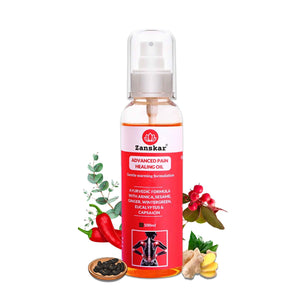
The Hidden Reasons Behind Pain Flare-Ups — And How to Get Relief Fast

For people living with chronic pain—whether from joint pain, fibromyalgia, back issues, or old injuries—there are days when pain seems to spike for no apparent reason. These episodes are called pain flare-ups, and they can be physically, mentally, and emotionally draining. Understanding the reasons behind flare-ups is key to managing them more effectively and reducing their frequency.
What is a Pain Flare-Up?
A pain flare-up is a temporary increase in the severity of pain symptoms, often without a clear cause. These episodes can last for hours, days, or even weeks, and they may occur despite ongoing treatment or lifestyle adjustments.
Flare-ups are a common part of chronic pain conditions such as:
- OA and RA
- Chronic lower back pain
- Sciatica
- Fibromyalgia
- Post-surgical pain
Understanding what causes them can help patients anticipate and better manage their pain.
Common Causes and Triggers of Pain Flare-Ups
While every individual’s experience is unique, several well-researched and widely reported factors contribute to pain flare-ups:
1. Physical Overexertion
One of the most common triggers is doing “too much, too soon.” Lifting heavy objects, standing or walking for long periods, or resuming exercise after a break can all strain joints and muscles, triggering inflammation and pain.
2. Stress and Anxiety
Stress is more than just mental—it has physical consequences. Emotional tension increases muscle tightness, activates the sympathetic nervous system, and heightens pain perception. Studies have shown that emotional distress is strongly linked to flare-ups, especially in conditions like fibromyalgia.
3. Weather Changes
Many people report increased pain with cold, damp, or humid weather. Though the science is still evolving, theories suggest that changes in barometric pressure may affect joint pressure and nerve sensitivity.
4. Poor Sleep
Lack of restful sleep doesn’t just make you tired—it reduces your body’s ability to regulate inflammation and cope with discomfort. Poor sleep has been directly linked to increased pain sensitivity and more frequent flare-ups.
5. Diet and Inflammation
Certain foods can promote systemic inflammation, especially processed sugars, refined carbs, trans fats, and excessive red meat. For conditions like gout, high-purine foods (e.g., red meat, alcohol) can directly trigger painful episodes.
6. Medication Changes or Missed Doses
Suddenly stopping or adjusting pain medications, anti-inflammatories, or antidepressants can lead to flare-ups. Even over-the-counter pain relievers, if missed, may cause pain to rebound.
7. Hormonal Fluctuations
Especially in women, hormonal changes during menstruation or menopause can exacerbate joint and muscle pain. Estrogen plays a role in pain regulation, and its decline can heighten sensitivity.
8. Postural Stress
Poor ergonomics—slouching, using bad seating, working long hours without breaks—can lead to muscle imbalances and spinal stress, particularly in those with neck or back issues.
9. Infections or Illness
When the body is fighting off a virus or infection, it can trigger inflammatory responses that worsen existing pain conditions. Even something as common as the flu can lead to a flare-up.
What Does a Flare-Up Feel Like?
Flare-ups may include:
- Increased intensity of pain (sharp, dull, throbbing, or burning)
- Muscle stiffness or joint swelling
- Fatigue or brain fog (especially in fibromyalgia)
- Reduced range of motion
- Sleep disturbances due to pain
- Emotional irritability or low mood
The unpredictability of flare-ups can be distressing, which is why having a plan to manage them is essential.
How to Manage Pain Flare-Ups
Here are evidence-backed strategies to reduce the intensity and duration of flare-ups:
1. Pace Yourself
Break tasks into manageable chunks, take frequent breaks, and avoid overexertion. Use assistive devices or support cushions when needed.
2. Use Heat or Cold Therapy
Heat helps loosen stiff muscles and joints; cold can reduce inflammation. Alternate between them based on your pain pattern.
3. Mind-Body Practices
Gentle yoga, meditation, deep breathing, and mindfulness reduce the stress response and can lower pain sensitivity.
4. Topical Pain Relief
Using anti-inflammatory creams or oils containing ingredients like capsaicin, arnica, menthol, magnesium, or essential oils like clove or eucalyptus can provide localized relief without side effects of pills.
5. Adjust Medications as Advised
During flare-ups, consult your doctor about adjusting pain medication or using short-term anti-inflammatories.
6. Rest and Hydrate
Don’t push through the pain. Allow your body time to recover, stay well-hydrated, and nourish yourself with anti-inflammatory foods.
Final Thoughts
Pain flare-ups are frustrating, but they are not a sign of failure or disease progression. Rather, they’re part of the natural rhythm of chronic pain conditions. With awareness of the triggers and a well-crafted self-care plan, flare-ups can be managed proactively.
Tracking symptoms in a journal can also help identify patterns over time—empowering individuals to prevent future episodes.
If flare-ups are becoming more frequent or severe, it’s crucial to consult a healthcare provider for a reassessment of your condition and management plan.
Learn More About Zanskar Health
If you have joint or muscle pain that makes it hard to move, Zanskar offers the most advanced full stack pain relief solutions for you.
Now available to purchase, Zanskar® Advanced Pain Healing Cream has a unique formulation of natural ingredients like Arnica, Vitamin B6, MSM and Capsaicin, which is trusted by over 20L+ pain sufferers globally. It provides lasting relief from muscle and joint discomfort that you can feel good about. Get your fix before stocks run out - buy now.
You can also gain access to therapeutic exercises and stretches for your condition by downloading the Zanskar Health physiotherapy mobile app. Additionally, you’ll have a personal care team to guide, support, and tailor our program to you, including behavioral and nutritional coaching.
Download our mobile app here 👉 download and track your exercise streak.
Medical Review: This article is written and medically reviewed by Dr Nishtha Mittal (Senior Health Content Editor at Zanskar Health). This article and its contents are provided for educational and informational purposes only and do not constitute medical advice or professional services specific to you or your medical condition.







